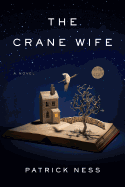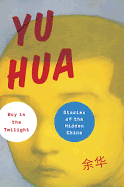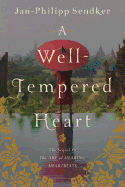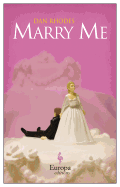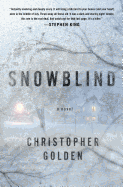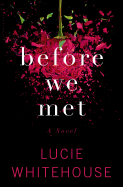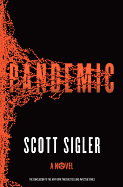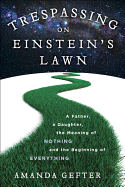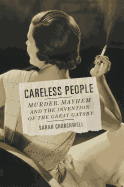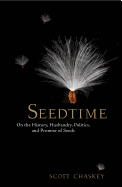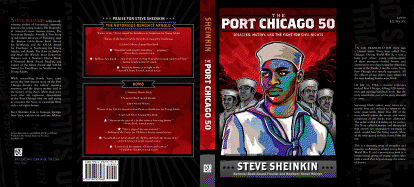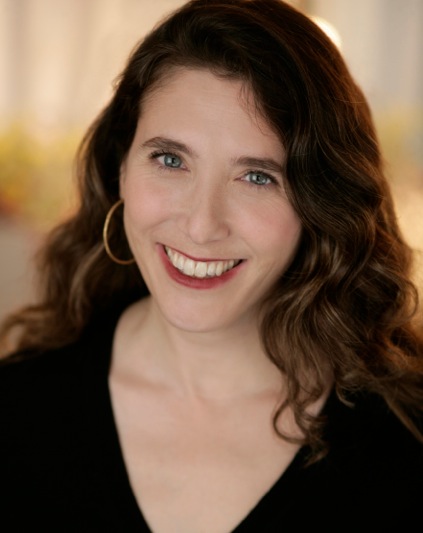 |
| photo: Laura Rose |
The predicament of the modern parent in middle-class America is the subject of Jennifer Senior's All Joy and No Fun: The Paradox of Modern Parenthood (just published by Ecco). Senior explores, through extensive research and studies of parents across the U.S., the effects of childrearing on parents' identities, marriages and sense of self-worth, from birth to adolescence. Senior is a contributing editor at New York magazine; she lives in New York with her family.
Tell us about your motivation for writing this book. You don't reveal personal details beyond that you have a son, but was there any element of a personal journey to this project?
It's a great question, and I'd love to say the answer is yes, but in fact the answer is somewhat disappointing: it was intellectual curiosity, rather than a personal crisis, that got me here. In 2006, I read Daniel Gilbert's Stumbling on Happiness, which happened to mention--very casually, I should add, almost as an aside--that most studies suggest that children don't improve their parents' happiness. At the time, I didn't have a child, and all I wanted in life was a child. The idea that children compromised anyone's well-being struck me as improbable, outrageous, totally nuts. But I knew I couldn't interrogate this finding as a non-parent. It'd create a huge credibility gap between me and most readers. When I became a mother, though, I felt like I could, and I did, in a story for New York magazine. My book barely mentions those studies, of course. They're not what All Joy is about. But they did start me thinking about a much larger question, which became the premise of my book: How do children affect their moms and dads? Why are most books so preoccupied with how parents can mold and shape their kids' lives when the question is so much more interesting when asked in reverse?
This said, I should add that I'm also a stepmom, and I entered my stepkids' lives when they were both adolescents. It was then that I noticed how profoundly teenagers affect their parents--particularly their self-image. And I'd seen very, very little written about that.
Where does the title come from?
An old friend of mine used this phrase--again, almost as an aside--when he first became a dad. He described parenting as "all joy and no fun," which I think captures something essential about the day-to-day strains of parenting, but also its sublime rewards.
How many parents did you interview? How would you describe your approach to research?
In Minnesota, I collected testimony from roughly 120 parents; in Houston and the surrounding suburbs, maybe two dozen; and in New York, maybe 20 or so. (Though only a few became main characters, obviously.) One of my biggest priorities/anxieties/neuroses was finding a systematic approach to selecting parents--I didn't want it to look like I'd simply worked the phones and called all of my friends. My initial hope was to follow new parents through a university marriage lab. Man, did that turn out to be naïve. No institutional review board would ever have allowed it. Then a professor of family social science named Bill Doherty pointed out to me that Minnesota has a huge state-funded parent education program, one with so many participants that I was bound to draw a respectable, highly diverse sample of parents. And with that, I was off to the races.
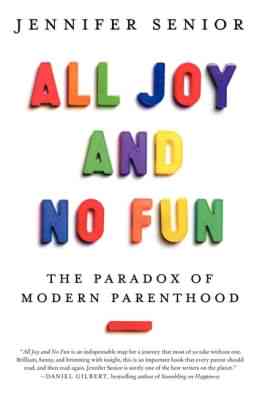 One fascinating observation you make is that modern childhood was invented just 70 years ago, which means we're still figuring out what it means to be a modern parent. How do you intend for your book to contribute to understanding this relatively new phenomenon?
One fascinating observation you make is that modern childhood was invented just 70 years ago, which means we're still figuring out what it means to be a modern parent. How do you intend for your book to contribute to understanding this relatively new phenomenon?
First of all, by simply pointing it out. Most mothers and fathers have no idea that we're in the midst of this huge historic shift, one in which the roles of both parent and child have been completely redefined. We're still sorting them out. It's reassuring, in some ways, simply to note that we're not supposed to know, precisely, what we're doing. It was much easier when we raised our kids to be just like ourselves. Now, we raise our children for a future we can't even fathom.
I also very much want mothers and fathers to understand that the concept of making their children happy, as a goal, is brand new. It used to be that our goals for our children were that they be moral and productive--productive on the family's behalf, no less. Children weren't sentimental assets. They were economic assets. They worked. On farms. In factories. In mines and mills. During the Progressive era, we put an end to child labor, thank goodness, and gradually, we began to view our children vulnerable, precious, irreplaceable. This was a moral victory, to be sure. But what it has meant, in practical terms, is that parents now feel responsible for the emotional well-being of their children. It's pretty hard to find a modern parent who doesn't care, deeply, about their children's self-esteem. But shoring up a kid's confidence is a pretty vague goal, if you think about it. Teaching children happiness isn't like teaching them how to plow a field or do arithmetic. And kids can sense it when their parents desperately want them to be happy. It's probably not a very healthy goal for either parent or child.
Do you have any criticisms of the modern definitions of childhood and parenthood?
Well, it sort of has to do with what I said above. If we all think of childhood as this period of extreme sheltering--keeping kids packed in bubble wrap and stored away from sunlight--we're probably not doing anyone any favors. Not them, and not us.
Your New York magazine article made some women in my circle of friends--newly married, late 20s--reconsider having children. In contrast, the book ends on a very child-positive note.
You know what's strange? My New York story ended on a very child-positive note, too. (A very child-positive section, in fact. An aria, almost.) I know that I haven't ever had a change of heart on this subject: I've always considered kids "high cost, high reward," as Bill Doherty likes to say. At the end of my magazine story, I talked about transcendence and meaning; I do the same thing in my book. It may be that the ending of my book makes more of an impression simply because it focuses on the extraordinary story of one woman, Sharon, who's raising her grandson because his mother, her youngest daughter, has died. Through her story, you get to see what having children means in the context of a whole life.
That feminism has produced a backlash against women working outside the home--pressuring them to be stay-at-home moms--makes it seem as if we are very far from achieving true equality for women.
I'm not sure that we've seen more pressure on women to be stay-at-home moms, per se. But women are definitely experiencing more pressure to spend loads of intensive parenting hours with their children--far more than their own mothers did--and yes, that does seem worrying, especially when you consider that most children don't pine for extra time with their mothers at all.
What is your next project?
Resting. Getting in shape. Becoming a better cook. Spending more time with my kid. Having just one job (during the final year, I was revising my book and holding down my day job at New York.) And then, maybe, writing another book, on a subject that isn't fully enough formed for me to discuss just yet. --Ilana Teitelbaum, book reviewer and author
Jennifer Senior: High Cost, High Reward
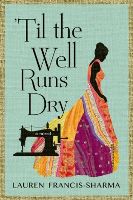 Sitting next to her was novelist Colson Whitehead, who's written a hilarious memoir about playing in the World Series of Poker in Vegas: The Noble Hustle: Poker, Beef Jerky, and Death (Doubleday, May 6)--another book to order now. I eagerly grabbed a copy of Archetype by M.D. Waters (Dutton), a SF/mystery/romance thrill-ride that I had read in one sitting; The Crane Wife by Patrick Ness (Penguin Press), a haunting, magical novel that I challenge you not to love; and one book I haven't yet read, but whose cover hooked me, as a good cover does: 'Til the Well Runs Dry by Lauren Francis-Sharma (Holt, April 22).
Sitting next to her was novelist Colson Whitehead, who's written a hilarious memoir about playing in the World Series of Poker in Vegas: The Noble Hustle: Poker, Beef Jerky, and Death (Doubleday, May 6)--another book to order now. I eagerly grabbed a copy of Archetype by M.D. Waters (Dutton), a SF/mystery/romance thrill-ride that I had read in one sitting; The Crane Wife by Patrick Ness (Penguin Press), a haunting, magical novel that I challenge you not to love; and one book I haven't yet read, but whose cover hooked me, as a good cover does: 'Til the Well Runs Dry by Lauren Francis-Sharma (Holt, April 22).



 One fascinating observation you make is that modern childhood was invented just 70 years ago, which means we're still figuring out what it means to be a modern parent. How do you intend for your book to contribute to understanding this relatively new phenomenon?
One fascinating observation you make is that modern childhood was invented just 70 years ago, which means we're still figuring out what it means to be a modern parent. How do you intend for your book to contribute to understanding this relatively new phenomenon?